Sacreblue! x SBS
The August Selection
Every month, Sacreblue! highlights francophone films from the SBS catalogue.
These movies will be available for the whole month for free on SBS On Demand.
Here is our August selection of SBS French films, jump into spring with these invigorating thriller films!
The Sitting Duck / La Syndicaliste (2022)
Director: Jean-Paul Salomé
Cast: Isabelle Huppert, Grégory Gadebois, François-Xavier Demaison, Alexandra Maria Lara, Marina Foïs, Yvan Attal, Pierre Deladonchamps,
Christophe Paou, Geno Lechner, Gilles Cohen, Christian Hecq, Mara Taquin, Aloïse Sauvage, Yves Heck, Andrea Bescond, Olivier Loustau, François Loriquet
Synopsis: In 2012, the head union representative of a French multinational nuclear powerhouse becomes a whistle-blower. Alone against the world, Maureen Kearney fights government ministers and industry leaders to bring the scandal to light.
The Sitting Duck was selected as part of the 2024 AF French Film Festival and to be screened in the Orizzonti section at the 79th Venice International Film Festival
where it was was nominated for the Orizzonti Award for Best Film.
Watch it on SBS on Demand here.
The Dazzled / Les Éblouis (2019)
Cast: Camille Cottin, Jean-Pierre Darroussin, Éric Caravaca, Céleste Brunnquell, Laurence Roy, Daniel Martin, Spencer Bogaert, Benjamin Gauthier, Suzanne De Baecque, Armand Rayaume, Jules Dhios Francisco
Synopsis: Based on the lived experience of director Sarah Suco, the film centres on twelve-year-old Camille, with a passion for circus arts, who sees her life turned upside down when her parents join a charismatic church. Gradually the indoctrination becomes sectarian.
The film was nominated for multiple awards, including the most promising actress César award for Céleste Brunnquell’s portrayal of Camille.
Watch it on SBS on Demand here.
Double Lover / L’Amant Double (2023)
Cast: Marine Vacth, Jérémie Renier, Jacqueline Bisset, Myriam Boyer, Dominique Reymond, Jean-Edouard Bodziak, Jean-Paul Muel, Pascal Aubert
Synopsis: Chloé, a woman with a fragile mental state, falls for her psychoanalyst, Paul. After moving in with him a few months later, she discovers a part of his identity that he’s been concealing.
The film was selected to compete for the Palme d’Or in the main competition section at the 2017 Cannes Film Festival. It had its world premiere at Cannes on 26 May 2017, with a simultaneous theatrical release in France on the same day.
Watch it on SBS on Demand here.
This article was first published on cnrsnews here
Supercritical fluids to recycle and develop circular economy
and sustainable development
Cyril Aymonier is one of the three recipients of the CNRS 2024 Innovation Medal,
which rewards male and female scientists whose research has led to groundbreaking technological, therapeutic or social innovation.
Putting water into special conditions of temperature and pressure, known as ‘supercritical’ conditions, can make it miscible with oil while no longer solubilising salts. In general, solvents in supercritical conditions start to behave in a manner that is somewhere between gas and liquid. This hybrid behaviour notably makes it possible to synthesise, shape and recycle materials that cannot be attained using conventional approaches.
Cyril Aymonier explains that: Supercritical fluid technologies are part of the circular economy and sustainable development. They make it possible to increase the proportion of recycled raw materials in new materials, among other things.
This CNRS research professor is a world-renowned expert in supercritical fluid media and the director of the Bordeaux Institute of Condensed Matter Chemistry. He designs new materials and raw materials for recycling, while also developing processes adapted to supercritical conditions.
Cyril Aymonier’s research has led to nearly fifty patents being filed, including over thirty resulting from collaborative contracts with industrial partners such as Safran, Arkema, Imerys, Renault, Essilor or L’Électrolyse. These industry partnerships have highly varied applications including the synthesis of artificial minerals, materials for catalysis and aeronautics, and the recycling of photovoltaic cells, magnets, food packaging and thermoplastics.
In 2019, his work also led to the creation of the start-up Idelam, which uses unique delamination technology to recycle complex multi-component materials. Aymonier is very much involved in research-led training, having supervised over seventy theses and post-doctorates, over half of which were in partnership with companies.
He adds that most of the questions that interest industry can be transposed into scientific problems which “is why my activities range from very fundamental research to technology transfer in partnership with industry”.
This year’s innovation medal complements the CNRS Bronze Medal Cyril Aymonier was awarded in 2011.
Navigating the French:
“Tutoiement” with Ian Winick
French has two forms of the 2nd person “you”; the informal “tu” and the formal register “vous”. The practice of using the informal “tu” form is known as “tutoiement”. If you start to get along fairly well with a new French acquaintance, you might field the question… On peut se tutoyer ? “Can we say tu?” This phrase allows you to change registers from the formal to the informal at the drop of a hat – something that English doesn’t allow quite so easily.
Further than the grammatical rules, there are many cultural considerations related to the use or non-use of “tutoiement”, what does this reveal about French culture and society and how does this compare for Anglophones? Joining host Emilie Monaco on this episode is translator Ian Winick.
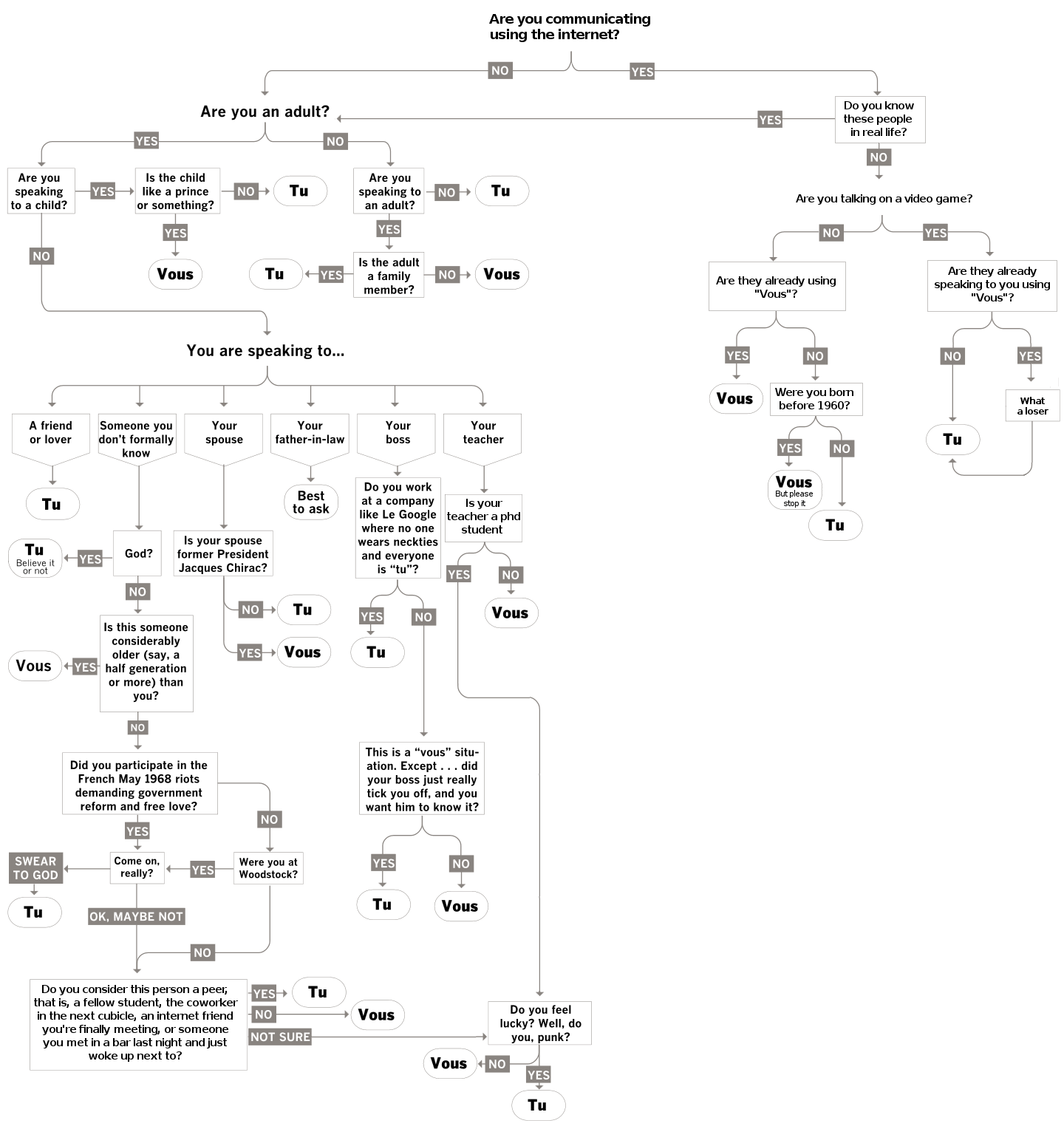
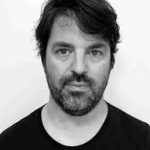 Ian Winick
Ian Winick
Ian Winick is a French and German to English translator originally from Dublin. He has been translating professionally for the past 20 years.
Head to his website to learn more.
The cover photo of this article features characters Noémie and Mathias from the French series “Call my Agent”.
These characters have an interesting dynamic where tutoiement and vouvoiement are explored.
All You Need to Know About El Niño
Oceans are warming rapidly and steadily as a result of climate change, yet, in 2016 this warming was amplified by a particularly strong event called “El Niño”, which pushed the planet into one of the hottest twelve-month periods on record. These powerful events occur naturally and have always existed, but climate change could alter their strength and ferocity in the future.
What is El Niño?
El Niño events are in fact just one half (the warm and wet half) of a natural weather cycle called the El Niño-Southern Oscillation (ENSO). During an El Niño event, the surface of the tropical Pacific Ocean warms more than usual, particularly at the equator and along the coasts of South and Central America. The warming of the oceans leads to the formation of low-pressure systems in the atmosphere, resulting in heavy rainfall along the western coasts of the Americas.
These events can last up to a year, but the warming tends to be strongest during the spring and summer months in the southern hemisphere, i.e., from October to February. In fact, this timing is the source of the phenomenon’s name: in Spanish, El Niño means ‘the little boy’, and the full name was originally “El Niño de Navidad”, meaning the Christmas child. In the 1800s, Peruvian sailors chose this name to describe the invasion of warm water that occurs every year around Christmas along the coasts of Ecuador and Peru. Today, the name has stuck to describe the accentuated warming of surface waters near the coasts of South America.
Why does El Niño happen?
Camille Risi, a climate expert from CNRS, France, explained: “This is a natural phenomenon caused by winds from the Pacific Ocean known as the Trade Winds. Under normal circumstances, these tropical winds blow from east to west in the Pacific, pushing the water westwards towards Indonesia and Australia. The ocean surface accumulates heat in the western Pacific and cold water in the east.

Every two to seven years in general, these winds weaken or reverse: this is what we call “El Niño”, Camille Risi sums up. This generally lasts between nine and twelve months. The meteorological phenomena are therefore reversed, with warmer water accumulating to the east of the Pacific and colder water to the west. In tropical areas, rainfall occurs when the water is warm. In fact, “the cumulonimbus clouds responsible for thunderstorms form when the warm air rises”, explains the researcher.
The periods when the El Niño phenomenon occurs are synonymous with major meteorological upheavals, and even disasters. The Western Pacific, i.e., Australia, deprived of rain, is affected by severe drought, sometimes leading to bushfires. Conversely, the Eastern Pacific, i.e., Central and South America, experiences unusually heavy rainfall, flooding and landslides.
More generally, all areas of the world are affected, in one way or another, by El Niño. Abnormal rainfall occurs and global temperatures rise. The African continent often feels the consequences: the South dries out while the Horn of Africa becomes wetter. “In general, the years affected by the phenomenon turn out to be among the hottest on a global scale,” concludes Camille Risi.
The effects are even greater in the second year of the phenomenon, according to the World Meteorological Organisation (WMO). The current El Niño episode began in June 2023 and continues into 2024. WMO Secretary-General Celeste Saulo states that “since June 2023, every month has broken the monthly temperature record, and 2023 is by far the warmest year on record”.
Scientists still don’t know exactly what triggers the cycle. But they can spot the signs of a nascent El Niño very early on, and they have a good idea of how the events develop once they are triggered.
What about La Niña?
 The other half of the ENSO phenomenon is generally referred to as “La Niña”. It is basically the opposite: ocean temperatures along the eastern half of the tropical Pacific cool and this part of the world dries out. The band of warmth and rainfall shifts to the other side of the ocean, meaning that Australia, Indonesia and South-East Asia become wetter and warmer than usual. La Niña events tend to last longer than El Niño events, persisting for between nine months and two years. In between a full ENSO phenomenon, ocean temperatures and rainfall patterns normalise.
The other half of the ENSO phenomenon is generally referred to as “La Niña”. It is basically the opposite: ocean temperatures along the eastern half of the tropical Pacific cool and this part of the world dries out. The band of warmth and rainfall shifts to the other side of the ocean, meaning that Australia, Indonesia and South-East Asia become wetter and warmer than usual. La Niña events tend to last longer than El Niño events, persisting for between nine months and two years. In between a full ENSO phenomenon, ocean temperatures and rainfall patterns normalise.
Is the ENSO phenomenon getting stronger with climate change?
Since El Niño has always existed, climate change is not responsible. On the other hand, researchers believe that the two events are adding up, aggravating the rise in temperatures and natural disasters. As a result, according to the European observatory Copernicus, the temperature of surface waters broke its monthly record in February 2024, with an average of 21.06°C.
Over the current period, Celeste Saulo believes that “El Niño has contributed to these record temperatures, but greenhouse gases, which trap heat, are unequivocally the main culprits”. She adds that the high-water surface temperatures in 2024 are “worrying, and cannot be explained by El Niño alone”.
Finally, Camille Risi adds that according to the IPCC (Intergovernmental Panel on Climate Change), the direct link between this event and climate change is not clear. “Still, the consequences of El Niño oscillations on changes in rainfall and its extremes will increase with climate change”, she concludes.
This article is taken from the ‘l’info durable’and national geographic websites.
Sacreblue! x SBS
The July Selection
Every month, Sacreblue! highlights francophone films from the SBS catalogue.
These movies will be available for the whole month for free on SBS On Demand.
Here is our July selection of SBS French films, cuddle up on the couch for a cozy movie night!
Marinette (2023)
Cast: Garance Marillier, Émilie Dequenne, Alban Lenoir, Fred Testot, Sylvie Testud, Caroline Proust, June Benard, Yamé Pertzing
Genre: Drama, Biography
Marinette Pichon is a sport star, activist and LGBTQ+ icon. She was the first French female football player to sign a professional contract, working in France and the United States she scored an impressive 81 goals across 112 international matches. Learn more about her beginnings and achievements through Virginie Verrier’s biopic, based on Pichon’s own autobiography ‘Ne jamais rien lâcher’.
Marinette was strategically released one month prior to the 2023 Women’s Wordl Cup. The film premiered at the Tribeca Film Fetsival in the United States.
Presented in partnership with Nine Orchard and the Seward Park Conservancy, the film is part of Unifrance and Villa Albertine’s Young French Cinema program.
Watch it on SBS on Demand here.
Black Box / Boîte noire (2021)
Director: Yann Gozlan
Cast: Pierre Niney, Lou de Laâge, André Dussollier, Sébastien Pouderoux, Olivier Rabourdin, Guillaume Marquet, Mehdi Djaadi, Aurélien Recoing, André Marcon, Anne Azoulay, Marie Dompnier, Grégori Derangère, Octave Boussuet, Philippe Maymat, Boris Ravaine, Gaël Giraudeau
Genre: Thriller
French-Belgian mystery thriller Black Box centers around Matthieu, a young and talented black box analyst at the Bureau of Enquiry and Analysis for Civil Aviation Safety.
He is tasked with discovering the reason behind the deadly crash of a brand-new aircraft. Yet, when the case is closed by authorities, Matthieu cannot help but sense there is something wrong with the evidence. As he listens to the tracks again, he starts detecting some seriously disturbing details. Going against orders, he begins his own rogue investigation – an obsessional and dangerous quest for truth that will quickly threaten far more than his career…
Premiering at the 2021 Alliance Française French Film Festival, the film went on to received five nominations at the 47th César Awards including best actor and best original screenplay.
and won the 2021 Reims Polar Prix du public award.
Watch it on SBS on Demand here.
Belle and Sébastien (2013)
Director: Nicolas Vanier
Cast: Félix Bossuet, Tchéky Karyo, Margaux Châtelier, Dimitri Storoge, Andreas Pietschmann, Urbain Cancelier, Tom Sommerlatte, Mehdi El Glaoui, Jan Oliver Schroeder
Genre: Adventure
Based on the 1966 novel and 1965 French TV Series, Belle and Sébastien is the first of a film trilogy centering around 7-year-old orphan Sébastien and his newfound furry friend, “the beast”, or as he likes to call her “Belle”. Together they try to foil a Nazi plan to capture French resistance fighters on the Franco-Swiss Border.
Garnering international enthusiasm, the film became the most popular at the Italian box-office in less than a week, and was awarded Best Film at the 2014 Ukranian Children KinoFest film festival.
Watch the film on SBS on Demand here.
Ep 74 – Navigating “Sportif” with Edna Zhou
In the lead up to the 2024 Paris Olympic Games, join Emily Monaco and Edna Zhou in deconstructing the word ‘sportif’ to dive deeper into the French relationship with sports and exercise.
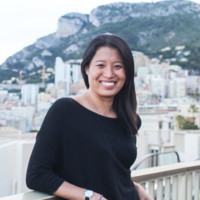 Edna Zhou is a freelance travel and sports journalist specialising in international sports media.
Edna Zhou is a freelance travel and sports journalist specialising in international sports media.
She has covered and worked with the Olympic games all over the world.
Follow her on Instagram @expatedna or head to her website to learn more.
CHRISTIAN PIERRE LA MARCA’S ODE TO NATURE
WONDERFUL WORLD: AN IMMERSIVE MULTIMEDIA CLASSICAL CONCERT
the elite of the French cellists Le Monde.
music brought to life at the highest degree Fono Forum.
French cellist, Christian Pierre La Marca has, in a few years, distinguished himself by his radiant presence in the world’s leading concert halls and his award-winning recordings. Apart from his numerous awards, he has also performed on some of the biggest stages in the world along with leading orchestras such as Philharmonia Orchestra, London Chamber Orchestra, Orchestre National de France to name a few.
On July 21, La Marca will captivate audiences at Snow Concert Hall in Canberra with his immersive performance concept, ‘Wonderful World.’ This multimedia concert is a homage to our planet, celebrating the awe-inspiring beauty of nature and emphasising the urgent need for its preservation. Driven by La Marca’s dedication to environmental conservation, this innovative programme is designed to inspire reflection and action towards safeguarding our natural world.
In a remarkable collaboration, La Marca is joined by the eminent Israeli pianist Itamar Golan, renowned for his collaborations with the most distinguished instrumentalists of our era. Golan’s artistry and critical acclaim have solidified his status as one of the most sought-after pianists of his generation, promising a performance that will be both extraordinary and unforgettable.
Christian Pierre La Marca’s ‘Wonderful World’ transcends the traditional concert experience, presenting what he calls “a concert show.” This visionary performance weaves stunning videos and images by renowned environmentalist, activist, and photographer Yann Arthus-Bertrand, creating a deeply moving and immersive backdrop for the music.
Both La Marca and the distinguished Israeli pianist Itamar Golan embark on a breathtaking journey through the wonders of our planet, exploring the natural world through a rich tapestry of music. Their repertoire spans popular jazz-inspired classics such as Gershwin’s Summertime and Rimsky-Korsakov’s Flight of the Bumblebee, alongside beloved contemporary tunes like Mancini’s Moon River and Louis Armstrong’s What a Wonderful World.
La Marca envisions his work as a powerful medium to appreciate and marvel at the beauty of our planet. By intertwining music with evocative imagery, he seeks to evoke deep emotions and a sense of urgency, compelling audiences to reflect on the necessity of environmental conservation. Through this innovative fusion of art and advocacy, ‘Wonderful World’ aims to stir both admiration for our natural surroundings and a commitment to their protection.
To book visit snowconcerthall.com
or purchase tickets through Eventbrite, here.
When science puts on a show

What if plants were to take their rightful place in our daily lives? Turning this dream into a reality is the challenge taken up by the founder of French start-up Aglaé, Sophie Hombert.
 Where does Aglaé come from?
Where does Aglaé come from?
Sophie, 32, has been interested in the world of plants for as long as she can remember. She grew up in the Normandy countryside, in a family of farmers. Following her baccalauréat, Sophie moved to Paris to study for a preparatory class with the goal of getting into design school. Paris life didn’t appeal to her though, “It was very complicated for me to live with such little greenery “, she says. After a spell in Brest, she finally enrolled at the École Européenne Supérieure d’Art de Bretagne (EESAB) in Rennes. It was then that she began to think about the place of plants in the city, about “how to reconnect people with nature“.
In 2014, as a second-year master’s student, Sophie approached the Institut Agro Rennes-Angers to write her dissertation on the subject. After graduating, Sophie began working in a design agency, without much enthusiasm. She was looking for a job more in line with her values… and without a boss. One day, while in the Paris metro, she came across a face-down newspaper on the floor. In it was an advertisement for an international start-up competition with €20,000 up for grabs. She signed up, fell down the rabbit-hole, and a month later won the competition. And so the Aglaé adventure began.
What is the concept?
The concept: produce light with flowers. Sophie’s company was founded in Chartres in 2016. Sophie and her team developed a “biosourced and biodegradable” serum which, once absorbed by plant roots, makes them fluoresce[1] for around three months. The formula is kept secret, but the 30-year-old assures that the product is not harmful to plants. It should also be noted that plants exposed to the serum pose no danger to animals or insects that are in their vicinity or in contact with them.
The fluorescent plant is the result of research and experimentation by the start-up. The plant that receives this nutrient solution absorbs it by capillary action via the leaves and flowers. As a result, the veins of the leaves and flower petals are revealed to all in reaction to black light. Almost all plant species (98%) react positively to the serum.
These plants include : alstroemeria, ferns, arum, rose, snapdragon, lilies, etc.
And so, what’s the point of it all?
Over-lighting[2] releases millions of tonnes of carbon into the atmosphere every year, as well as being a source of light pollution, which we now know is dangerous for biodiversity and to our health. While the start-up’s main market is currently events (seminars, parties) and arts, Aglaé hopes to conquer urban spaces in the future. The ultimate aim is to design soft, living, electricity-free lighting solutions for a more sustainable future where parks and gardens will be lit… by the light of trees! The city of Chartres has provided €40,000 in funding for the project for its famous Lights Festival, and Disneyland Paris is working with the start-up to create an entire fluorescent design. The start-up is already exporting in Montreal, New-York and… Melbourne!
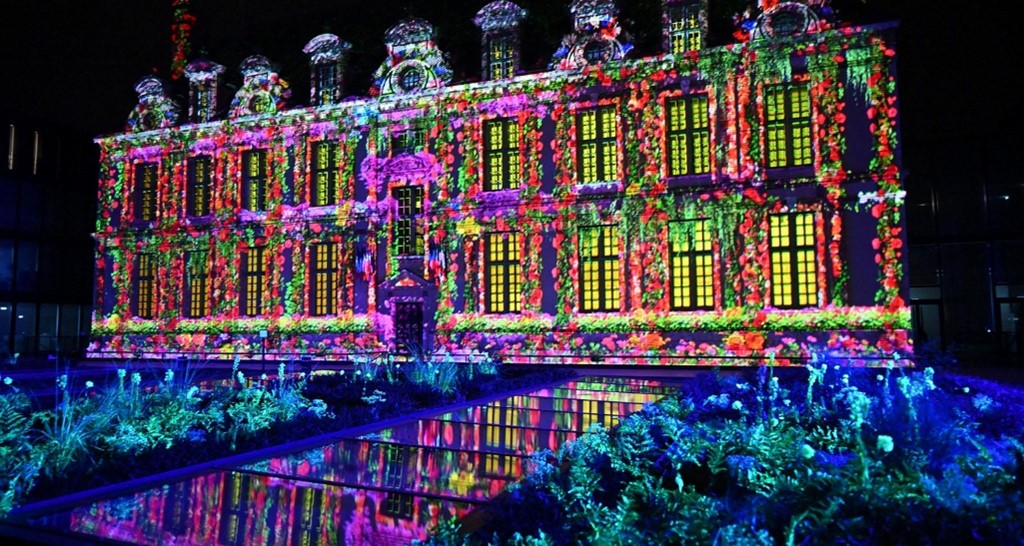
This article is taken from the Aglaé website and the interview of Sophie Hombert from Ouest-France. Some images come from the Aglaé website and from Terra Botanica.
[1]Fluoresce : to produce, undergo, or exhibit fluorescence. (Merriam-Webster Dictionary, 2024)
[2] To overlight : to illuminate (something, such as a building) too brightly or thoroughly. (Merriam-Webster Dictionary, 2024)
Bastille Day celebrations across Australia !

Bastille Day , or ‘le 14 juillet’ is the national day of France, celebrated yearly on the 14th of July.
The date commemorates the anniversary of the fall of the Bastille prison in Paris on the 14th of July 1789,
marking the start of the revolution and the end of monarchic rule.
Bastille Day is celebrated throughout the country, read on to find a little corner of France near you!
Adelaide
5 july – AF Bal de Bastille Day
Celebrate Bastille Day in style with an unforgettable evening of French flair !
Join the Alliance Française of Adelaide for a celebratory evening including champagne, gourmet French food, live music and activities for the kids.
Tickets: $35 for adults, $20 for kids & teens under 12
Brisbane
5-7 july – Le Festival
As the world goes bleu-blanc-rouge for the 2024 Olympic and Paralympic Games in Paris, Brisbane is joining the party with its iconic celebration of French culture,
Le Festival, making a momentous return for a special edition.
Head to Le Festival for a three-day immersive French culture weekend including live muisc and dance perfomances, a french market, mini-olympiades for the kids,
and last but not least a vast array of workshops and masterclasses.
Tickets: $13 – 21.20 for adults (depending on day), free for children 12 & under
Sydney
11-14 july – Bastille Revolution on The Rocks
Head to Circular Quay for a 4-day French food, wine, and art extravaganza. Taste winter specialties at the food markets, french wines, beer and other alcolohic beverages,
enjoy over 70 performances from local artists, performers, and well-known Australian bands, and last but not least take a hands on approach with exclusive workshops and masterclasses.
Free entry festival
11 july – AF Sydney Bastille Day Grand Bal
Experience the best of French culture for le 14 juillet, with a thrilling programme of entertainment, music and dancing.
Inspired by France’s traditional fire brigade ball, enjoy live entertainment and music, delightful French treats, and enter the draw to win fantastic prizes including a 30-minute Heli flight,
a night at the luxurious Sofitel, and many gift vouchers from French brands including Louboutin, Decathlon, Tefal and L’Occitane.
Tickets : $29 including a complementary Marie Brizard cocktail.
Darwin
12 july – AF Darwin Bastille Day Party
Every year, the Alliance Française of Darwin organises its annual Bastille Day event.
Head to the Darwin Surf Life Saving Club / Cafe de la Plage for an entertainment packed evening including a French-style sunset supper, French music, raffle prizes and kids activities.
Free event
Gold Coast
12 july – AF Gold Coast Bastille Day Celebration – programme released shortly,
Canberra
13 july – AF Canberra Bastille Day Brunch
Head to the Alliance Française of Canberra for an enchanting morning filled with the flavors and rhythms of France including a tasty brunch by Savoir French,
live music, trivia games, and a raffle with fabulous prizes.
Tickets: $60 non-AF members | $51 AF members
Perth
13 july – AF Bastille Day Dinner (Sold out)
Bendigo
13 july – Bendigo Library
Part of a new series of French events in Bendigo, learn more about le 14 juillet, or Bastille Day.
Head to the Bendigo library for for an enlightening talk where you’ll delve into the pivotal events surrounding this historic date in 1789.
Participants will explore the lasting legacy of the French Revolution and how Bastille Day is portrayed in pop culture today.
Ticket : $15, includes a selection of sweet treats,
Geelong
13 july – AF Geelong Bastille Day
In partnership with the City of Greater Geelong, join the Alliance Française de Geelong for a special Bastille Day evening at the Little Creatures Brewery.
Enjoy a charcuterie grazing starter and a two-course French inspired meal, entertainment by French duo ‘Les Baguettes’, and enter the draw for lots of fun giveaways.
Tickets: $85 non-AF members | $75 for AF members
Sunshine Coast
14 july – AF Sunshine Coast Bastille Day lunch
Join the Alliance Française of the Sunshine Coast for a celebratory evening including music and songs, and a lovely meal at the Loose Goose restaurant.
Toowoomba
14 july – AF Toowoomba ‘Le Quatorze Juillet – Déjeuner’
Come together at the Monty Brewing Co to celebrate La Fête Nationale, try your luck in the raffle, share a meal
and enjoy performances including Can Can dancers and live music by Josephine & Jesse.
Register here : https://www.frenchtoowoomba.com/community/event-rsvp/?event_id=71
Townsville
14 july – AF Townsville Bastille Day Sunday Lunch
Join the Alliance Française of Townsville at the Rambutan Rooftop for a special poolside Bastille Day lunch including a quiz game with prizes.
Tickets: $55 Adult and $22 Children for non-AF members | $45 Adult and $12 Children for AF members.
Melbourne
13-14 july – Melbourne Bastille Day French Festival
The annual Melbourne Bastille Day French Festival returns at the iconic Queen Victoria Market for two days of French and francophone entertainment including a French Winter Market, French and Francophone cuisine, perfomances, as well as a cultural program filled with Les Lumières talks, Walking Tours and interactive masterclasses. This year’s offering also includes an online program.
Event free to attend, booking fees apply to cultural program events.
20 july – So Frenchy So Chic Bastille Day Soirée
In celebration of La Fête Nationale, put on your best sparkly fit and join So Frenchy So Chic at the Meat Market
for a musical journey featuring France’s most iconic dance-floor bangers from the last 40 years.
Tickets from $50,57 – $59,99 depending on number of guests.
Tickets include complimentary cheese grazing station courtesy of L’Artisan Cheese Organic
Alphonse Mucha: Spirit of Art Nouveau
A Dazzling Journey into the Heart of Art Nouveau at Art Gallery New South Wales
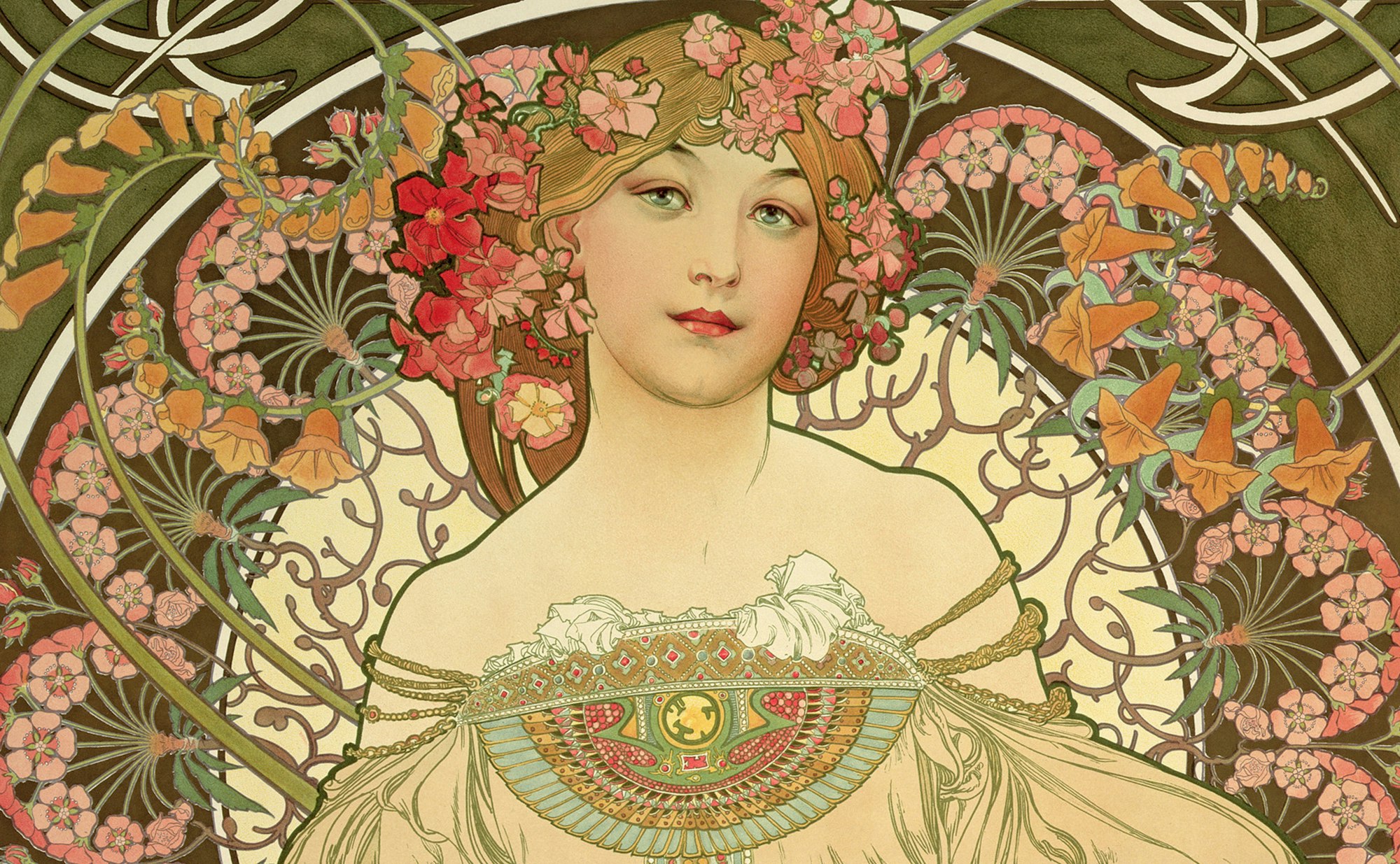
Dive into the mesmerizing world of Alphonse Mucha, one of art’s great stylistic innovators, with the most comprehensive exhibition of his work ever seen in Australia. From June 15 to September 22, 2024, the Art Gallery of New South Wales presents ‘Alphonse Mucha: Spirit of Art Nouveau’ in the Naala Badu, North Building, Lower Level 2.
An Unprecedented Immersion in the Work of a Visionary
Known for his seductive, sinuous compositions, Mucha (1860-1939) created a visual language that defined the look of late 19th-century Paris, embodying the very spirit of art nouveau. This exhibition, realized in close cooperation with the Mucha Foundation in Prague, draws from the Mucha Family Collection. It brings together over 200 works, including illustrations, jewelry, interior decorations, photographs, and more, revealing an artist and designer whose powerful influence continues to resonate today.
A Journey Through an Extraordinary Life
Once hailed as ‘the greatest decorative artist in the world,’ Mucha rocketed to fame with the posters he created for legendary actress and international superstar Sarah Bernhardt. He gained global recognition through advertising and product design, taking his first steps toward the democratization of art that he so passionately desired.
The exhibition traces Mucha’s journey from his humble beginnings in Moravia (present-day Czech Republic) to his breakthrough in Paris during the belle époque, and his later years dedicated to championing the Slavic peoples.
Historical Art at Naala Badu
‘Alphonse Mucha: Spirit of Art Nouveau’ is presented as the first exhibition of historical art in the Naala Badu. Co-curated by Tomoko Sato, curator of the Mucha Foundation, and Jackie Dunn, senior curator of exhibitions at the Art Gallery of New South Wales, this exhibition is a must-see for art lovers and history enthusiasts alike.
Tickets and Special Offers
Tickets for entry start at $35 for adults, with discounts available for concessions and groups. Hot tip: score two-for-one tickets on Wednesday evenings between 5–10 pm, when the gallery is open late. Grab your tickets here.
Don’t miss this unique opportunity to explore the work of a visionary artist whose legacy continues to inspire and enchant.
